#Zauberflöte
Explore tagged Tumblr posts
Text
Eine der besten Szenen der deutschen Krimigeschichte XD
München 7 - Eine komische Oper
Verkehrschaos vor der Bayerischen Staatsoper, nachdem zwei Unfallwägen die Tiefgarage blockieren. Die Polizei sammelt also also Schlüssel ein und parkt die Autos ein, während drinnen "Die Zauberflöte" läuft.
11 notes
·
View notes
Text
the magic flute is not a comedy. the magic flute is the tragic story of a sweet boy who gets recruited into a white supremacist patriarchal cult because he never fact checks a damn thing.
#and you won't convince me any other way#Zauberflöte#die zauberflöte#the magic flute#mozart#my posts
5 notes
·
View notes
Text
Goddammit, still?! So, I was with this girl, and then this real weirdo (like, total featherbrain) showed up and sat down at the table. Then she and the dude ran off and left me with this huge check. When I got up to complain, the dude started playing glockenspiel and then the whole restaurant did this wild, uncontrollable, dance routine.
I think I have some complaints to bring up with that chick's mom.
Now if you'll excuse me, I can't type while my legs are dancing.
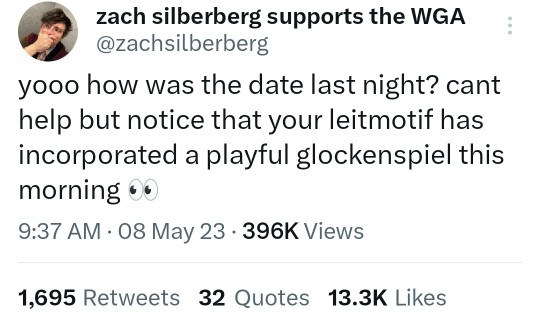
34K notes
·
View notes
Link
#classicalmusic#DieZauberflöte#MagicFlute#Mozart#Openingnight.Reviews#Opera#Pamina#Papageno#QueenOfTheNight#Sarastro#Tamino#TheMagicFlute#Weihnachten#Zauberflöte
0 notes
Text
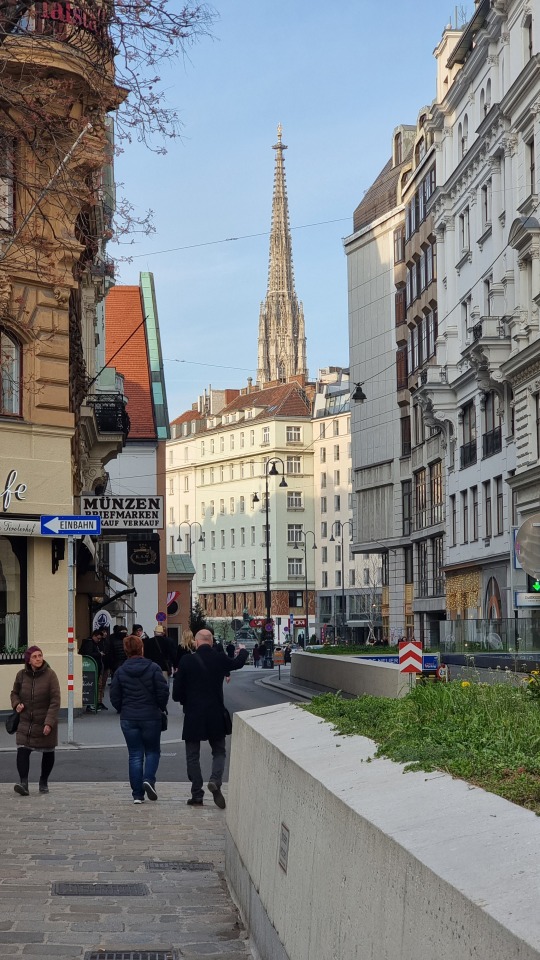
Wien, Mittwoch, den 20. März 2024
Bin heute Nachmittag hier angekommen, bei herrlichem Wetter und in guter Stimmung. Am Abend wird es noch recht kalt. Die "Zauberflöte" im Burgtheater (gemäss Selbstdeklaration "The opera but not the opera") ist ein vergnüglicher Mix von Alt und Neu, von Original und Parodie, von Mozart und Pop - und sogar einem Schuss Schubert.
1 note
·
View note
Text
As a side note: NB that productions in which the singers portraying Papageno and Papagena fall in love can over time prove... problematic. (cc: @petermorwood )
The Different Portrayals of Papageno in "The Magic Flute" (Die Zauberflöte)
Of all the characters in Mozart's The Magic Flute, Papageno is probably the one most open to interpretation by the singer and the stage director. As I've watched different performances of the opera, the funny bird-catcher seems almost like a different character in each version.
Every singer brings unique qualities to the role, but I've narrowed the most common portrayals down to four – which can be combined with each other too. I've seen baritones give excellent performances in every one of these portrayals, as well as in blends of them.
The Innocent

This is the sweetest portrayal of Papageno and the most endearingly simple-minded. He’s most often portrayed by younger baritones: the more baby-faced, the better. This uneducated, naïve young creature of the woods and mountains is almost a Peter Pan figure (without Peter Pan’s brashness or ruthlessness, though with a little of his boyish cockiness), who has never quite grown up. His childlike qualities include total earnestness as he asks questions with obvious answers, childlike quaking and whimpering in the face of danger, and childlike sobbing in moments of despair. Yet while his failure to “be a man” sometimes tries other people’s patience, no one except Monostatos can really dislike him. His friendly, cheerful, exuberant yet gentle demeanor is filled with natural charm, and the broad, sunny comedy of nearly all his scenes keeps the audience laughing, yet his boyish vulnerability is touching too, even when it’s played for laughs. Most endearing of all is his lively, wide-eyed, unabashed joy in all of life’s most simple pleasures. He might be an unsophisticated man-child, but whatever he lacks in maturity or wisdom he makes up for in zest for life and in warmth of heart.
The Peasant

This is a more mature, down-to-earth Papageno, who clearly represents the common man. He comes across as an average, hardy 28-year-old peasant, lifted straight out of the 18th century Austrian countryside into an exotic fairy tale world. Although uneducated and unrefined compared to Tamino, he’s not particularly naïve, but conveys sound working-class intelligence and practicality, and he often delivers his funny lines with a knowing, snarky wit. This makes him a kindred spirit to classic earthy “comic servant” characters like Sancho Panza or Leporello. His lustiness is also pronounced as he craves good food, alcohol, and female companionship: it’s clear that his desire for a Papagena is carnal, not just emotional. And despite all his fears and foibles, there’s an underlying stolidness to him; a sense of resilience that suits a man whose spent his life working hard to earn a humble living. Ultimately, he fails Sarastro’s tests not because he’s silly or weak, but because he’s just too ordinary for the grandly idealistic world of the priests. This makes him less broadly funny than some other Papagenos are, but it makes him easy for the audience to personally relate to, and easy for them to view as a friend too.
The Odd Duck

This is the most eccentric Papageno. His costume tends to be more wildly feathery than other Papagenos’ and make him look less human and more birdlike. He often has more birdlike mannerisms too: for example, making chirping sounds when he sees a pretty girl, or literally screeching in terror. But even if he’s portrayed as fully human, he’s defined by adorable quirkiness. In contrast to the staid dignity of the upper-class characters who surround him, he has puckish, squirrely energy, with little thought for dull things like “manners” or “social rules,” and his emotions always run free and high, sometimes causing funny melodramatics when he’s especially scared or distraught. Yet his joy in living is equally strong and unabashed, and for the audience, it’s infectious. Nor is there any restraint on his love of food, wine, and pretty girls, or on his playful and mischievous sense of humor. This free spirit is a true “child of nature,” who, like a wild bird, lives by his animal instincts: he doesn’t care what anyone else thinks of him, no matter how strange, silly, or inappropriate he seems by normal standards of society. He just does whatever he feels like doing, and the audience can’t help but love him for it.
The Sad Clown

This is the least comical Papageno, but no less endearing than the others. His costume tends to lack feathers and be drably colored, disheveled, and poor-looking. Nor is his demeanor as broadly cheerful as other Papagenos’, but more reserved, and as for his style of humor, he’s most akin to Charlie Chaplin’s Little Tramp. The audience laughs at his foibles and slapstick, but feels pity him as well, because he shows a full and realistic range of emotions, with a subtle yet distinct vein of melancholy. The audience realizes what an unlucky man Papageno really is, as he constantly fails other people’s expectations and is browbeaten by both the villains and the heroes alike (all except Pamina). The sense of loneliness he conveys is especially poignant: not only in his deep yearning for a Papagena, but because he grew up without parents, has no real friends (only social superiors, some kind, others less so), and has never known any form of love. This Papageno’s eventual suicide attempt seems much less ridiculous than usual: even though it’s still played partly for laughs, we can almost believe he might go through with it. When he finally finds his Papagena in the end, his happiness feels long overdue and well earned.
The Pecking Rooster

This Papageno portrayal is more of a subtype than an individual type: he can predominantly be either an Innocent, a Peasant, or a Sad Clown. But either way, he’s pricklier than other Papagenos, with more machismo and a little bit more of a temper. Like a rooster defending the henhouse, he feistily defends his own safety and comfort, and like the Cowardly Lion with his “Put ‘em up! Put ‘em up!” he tries (but fails) to mask his fears with “manly” pugnaciousness and pride. Expect this Papageno to posture exuberantly as he claims to have the strength of a giant, to puff himself up to scare Monostatos away, to be as stubborn as a mule in refusing to face each new danger, and to bicker with Tamino and the priests every step of the way. His anger at being constantly ordered around, dragged into unpleasant situations, and denied the reward he was promised (a bride) is loud and clear. Yet unlike his villainous counterpart Monostatos, he’s never consumed by his anger, but combines it with classic Papageno warmth and good humor. For that reason, audiences empathize with his frustration, and admire his proud efforts to stand up to the powers that frustrate him, even though he comically fails to thwart them.
Here are some examples of the different Papagenos from different filmed performances of the opera. (I'll add more as I see them.)
*William Workman (Hamburg, 1971): The Innocent.
*Håkan Hagegård (Ingmar Bergman film, 1975): The Innocent, with undertones of the Sad Clown.
*Benjamin Luxon (Glyndebourne, 1977): The Peasant, with traces of the Innocent and the Sad Clown.
*Christian Boesch (Salzburg, 1982): A blend of the Innocent, the Peasant, and the Pecking Rooster, with undertones of the Sad Clown. (In other words, he's "all of the above.")
*John Fulford (Sydney, 1986): The Peasant.
*Mikael Samuelson (Drottningholm, 1989): The Odd Duck, with the earthiness of the Peasant.
*Manfred Hemm (the Met, 1991): The Innocent.
*Detlef Roth (Paris, 2001): A blend of the Innocent, the Odd Duck, and the Pecking Rooster.
*Simon Keenlyside (Covent Garden, 2003): The Sad Clown.
*Christian Gehaher (Salzburg, 2006): A blend of the Peasant and the Pecking Rooster, with hints of the Odd Duck.
*Nathan Gunn (the Met, 2006): A blend of the Peasant and the Odd Duck, with traces of the Pecking Rooster.
*Markus Werba (the Met, 2017): A blend of the Innocent and the Peasant, with traces of the Pecking Rooster.
Meanwhile, in my gender-bent retelling, An Eternal Crown, I think Lorikeet is a cross between the Innocent and the Odd Duck, with a few undertones of the Sad Clown.
I'd be interested to learn which portrayal(s) @leporellian is using for the anthropomorphic cat Papageno in their Magic Flute-inspired novel Song of the Sky.
@ariel-seagull-wings, @tuttocenere, @vogelfanger1984, @thealmightyemprex, @thevampiricnihal, @cjbolan
349 notes
·
View notes
Text
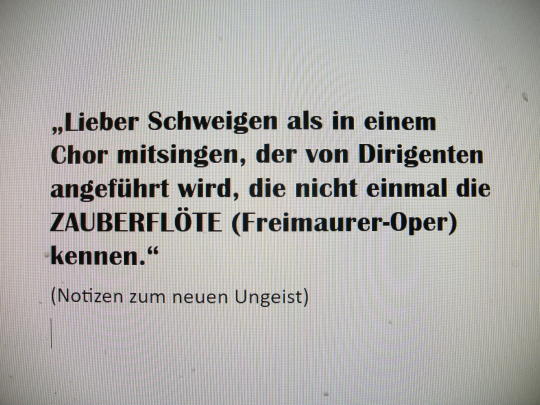
#neue rechte#Antisemitismus#doppelte moral#meinungsfreiheit#Zauberflöte#Mozart#Bildungsferne#reichsbürger#Ungeist
0 notes
Text
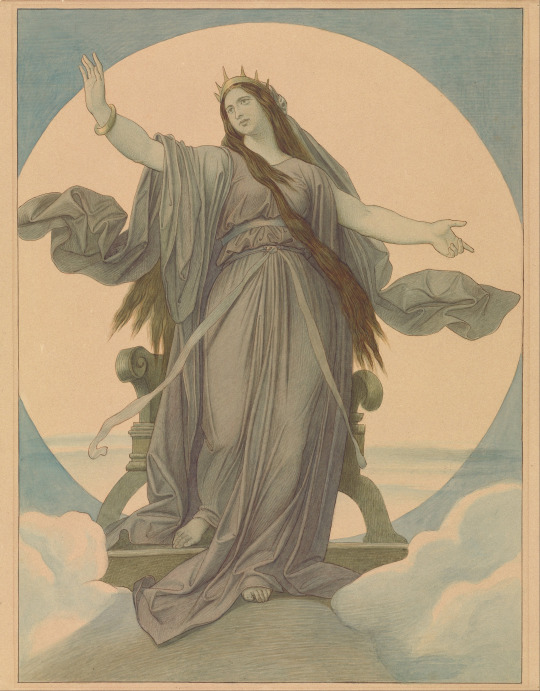
Title: The Queen of the Night Artist: Moritz von Schwind (Austrian, 1804-1871) Date: 1864-67 Genre: drawing for a production of Mozart's Die Zauberflöte Medium: watercolor over graphite Dimensions: 41 cm (16.4 in) high x 31.1 cm (12.4 in) wide Location: Getty Center, Los Angeles, CA, USA
#art#art history#Moritz von Schwind#drawing#illustration#Queen of the Night#Die Zauberflöte#The Magic Flute#Austrian art#19th century art#watercolor over graphite#Getty Center
300 notes
·
View notes
Text
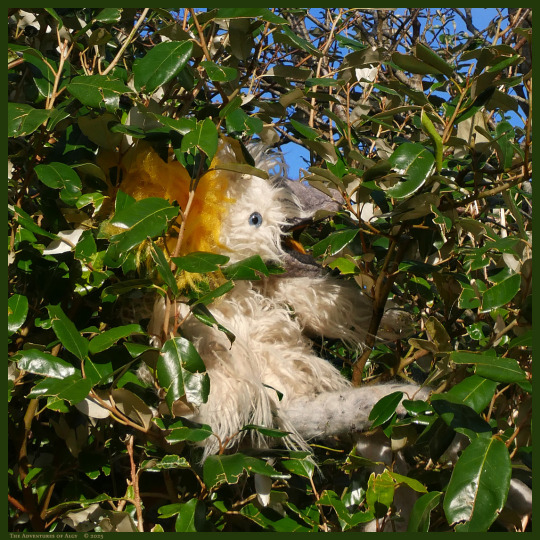
Although the blue sky and sunshine were more than welcome, there was no question that the northerly wind was bitterly cold, and decidedly uncomfortable when it whistled through his feathers – and in any case Algy's perch in the still-bare birch tree was precarious and difficult to maintain. So before long common sense prevailed in his fluffy bird brain, and Algy hoppped down out of the tree and fluttered around in search of a much more sheltered location in which to revel in the late January sunshine and the gorgeous blue overhead.
Selecting a dense, evergreen eleagnus bush in a more sheltered area of the garden, Algy made himself comfortable and then started to listen to the other smaller birds twittering in the trees and shrubs around him. They were rejoicing in the sunshine too, and he knew that very soon they would be starting to think about building their spring nests.
So, opening his beak, Algy began to sing that most famous of all bird-nesting musical offerings… 😀 He had no difficulty with the baritone part, of course, but it was as well that his audience was very small, for his attempt to sing the soprano role of Pappagena produced a result which it might be kinder to pass over…
Algy certainly could not say the same for Ingeborg Hallstein's version, however, so for those of his friends who expressed appreciation of her voice recently, here is another clip from her archive, singing the Papageno-Papagena duet from Mozart's opera Die Zauberflöte, together with Peter Alexander in 1969.
Happy nesting, little birds 🤗
youtube
#Algy#photographers on tumblr#writers on tumblr#photography#Scotland#The Magic Flute#Papageno Papagena duet#Die Zauberflöte#Mozart#papageno#Scottish Highlands#Ingeborg Hallstein#Peter Alexander#singing#spring is coming#end of winter#sunshine#nesting time#eleagnus ebbingei#awake#blue sky#storybook land#whimsy#fluffy bird#fluffy#original character#original content#plushies#adventures of algy#jenny chapman
69 notes
·
View notes
Text
youtube
Mozart's Die Zauberflöte with the duet "Pa-pa-ge-na! Pa-pa-ge-no!"
performed by Huw Montague Rendall and Elisabeth Boudreault.
Very artistic! 💐👍 Love Mozart 💖
#wolfgang amadeus mozart 1756-1791#mozart#die zauberflöte#duet pa-pa-ge-na! pa-pa-ge-no!#huw montague rendall#elisabeth boudreault#魔笛/二重唱#love mozart
55 notes
·
View notes
Text
I think whenever the theatre gang is working on a musical the chain at the cafe collectively agree to play music from that musical and if someone asks why they’re playing that specific music they’re like
IM GLAD YOU ASKED
SO
AT *insert name of the theatre* THEYRE CURRENTLY PLAYING THIS MUSICAL WITH VERY, VERY TALENTED ACTORS AND ACTRESSES AND WE HIGHLY RECOMMEND YOU TO CHECK IT OUT FOR IT IS AWESOME
So atm (4.3.2025 date cuz my obsessions change) they’re playing songs from Frankenstein (2008)
Usually the chain- specifically the younger ones, wild Hyrule, wind, sometimes four and legend- really like fight for who decides which songs to play, but when this happens they take a break from their playlist war.
When the fighting goes too far tho time steals the controller and starts playing opera shit
#cc au#the chains cafe#lu au#linked universe#lu chain#just Carmen#or zauberflöte#(a play from Mozart. where my Austrians schnitzels (not Australians) at#lu legend#lu four#lu wind#lu hyrule#lu wild#lu time#theatre gang
40 notes
·
View notes
Text

One of these characters doesn't need introduction, i think. The other… well.
I guess, Papageno the birdcatcher from Mozart's 'The Magic Flute' wandered the forests long enough to stumble upon Jareth the Goblin King's realm. Not entirely impossible. First of all, 'The Magic Flute' is weird. Second, Papageno does feel like a fey creature, to the point that the main character has to state his disbelief if he's even human? Papageno's answer? 'Who do you think i am? Surely not a bird?' And that's just libretto.
The actual stage production of DZF from 2005 i've based this fanart upon? Well, not just Papageno has this strange fey vibes, but that of a teenage wannabe-rock star as well.



Also, THIS:

When you need one second to tell everything about your character. Balls make everyone and everything better, i guess. Including David Bowie and Gabriel Bermudes.
38 notes
·
View notes
Text
Idea: shapeshifting Papagena who's actually been popping up on stage in various bird forms throughout the play.
She's been keeping an eye on Papageno for a while now. Also she's the real reason the Queen of Night needs so many birds: she wants to capture her but doesn't know what she looks like because Papagena keeps shifting to different species. So the Queen just has Papageno bring her birds every day until she finds the right one.(Papagena keeps escaping him)
47 notes
·
View notes
Text

#this post brought to you by my housemate who when we hit act 2 in the mcburney zauberflöte production#i was like “oh it's time everyone knows this one!”#and he just sat there like “i have no idea what you're talking about.”#i could have put habanera or the anvil chorus or ride of the valkyries#i almost said non piu andrai but i do think that one is a little more niche#nessun dorma was also an option#but i am terminally mozartbrained sorry.
33 notes
·
View notes
Text
That post about all the different possible interpretations of Frankenstein, and my response post about the different interpretations of Little Women, have made me think of all the different ways that other stories can be interpreted.
For example, the opera The Magic Flute. Some people wonder why I never get tired of that particular opera. Well, one reason is that no two productions feel exactly the same, because it can be looked at in so many different ways.
Here's a list of different interpretations I've read. This is probably just scratching the surface of possible perspectives, though.
Nor are these readings mutually exclusive: several can be and have been combined with each other.
*The Magic Flute is about the Age of Enlightenment. The Queen of the Night represents the Baroque era (hence the pseudo-Baroque style of her music), with its powerful Catholic church and ancien régime: luxuriantly beautiful and captivating, but decadent, manipulative and ruthless. Sarastro and his priests represent the Enlightenment, and in particular the Freemasons, with progressive values of reason, mercy, fraternity, self-control, etc. The Queen's ultimate downfall and Sarastro's rise in her place represents the social, cultural and philosophical changes that swept the Western world in the 18th century, leading to the American and French Revolutions, among other reforms. (As for why the progressive men still oppress women and own slaves... well, just look at real life.) Tamino and Pamina are an idealized young everyman and everywoman, who learn to embrace Enlightenment values and will carry them into the future.
*The Magic Flute is a socio-political and Masonic allegory focused expressly on Austria. All the sentiments above still apply, but the Queen specifically represents the staunchly Catholic Empress Maria Theresa, Tamino her more progressive son Emperor Joseph II, Sarastro the prominent Masonic leader Ignaz von Born, and Pamina the country of Austria itself, whose soul they struggle for.
*The Magic Flute is about Freemasonry as religion, namely as an offshoot of Christianity. Pamina's late father, who bequeathed his power to Sarastro, represents Jesus Christ himself. His widow the Queen of the Night, who sees herself as his rightful heir, expressly represents the dazzling yet corrupt Catholic church, the so-called "Bride of Christ." Sarastro and his priests, again, represent the Freemasons, who are portrayed as the true heirs of Christ, faithful to His teachings of mercy, brotherhood, endurance, and forgiveness. Tamino and Pamina learn which religion is false and which is true, then prove their worthiness to be initiated into the true religion.
*The Magic Flute is about the progress from nature to civilization. The Queen of the Night is a matriarchal nature goddess who reigns in a realm of stars, rocks, birds, and animals, where there is no law, only emotion, intuition, and personal will. Sarastro, by contrast, rules a patriarchal city and religious order, where laws, rituals, collectivism, and codes of virtue reign supreme. The opera celebrates the progress from the former to the latter, which has occurred in every country since recorded history began. Yet because humans need emotion and intuition as well as law and order, Sarastro's world keeps the best aspects of the Queen's world: her daughter Pamina, the Three Boys, and the magic flute and bells.
*The Magic Flute is about man vs. woman. Sarastro and his followers define all their values as "manly," while all things "womanly" are associated with the Queen of the Night. "Manhood" equals strength, reason, self-control, steadfastness, and light, while "womanhood" equals passion, intuition, vulnerability, manipulation, and darkness. The entire struggle between the Queen and Sarastro, which Tamino, Pamina, and Papageno are caught up in, embodies the tension between the sexes and all the principles associated with them. As for the resolution, there are two ways of viewing it:
**(a) The story is entirely pro-man and anti-woman. Masculinity triumphs, femininity is defeated. An individual woman (Pamina) can only redeem herself by renouncing her femininity (her bond with her mother the Queen) and aligning herself with masculine principles (joining Tamino in his trials and being initiated into Sarastro's order).
**(b) While the male characters think the solution will be the triumph of man over woman, they're wrong: the true solution is for man and woman to reconcile. The conflict is resolved not by the Queen's defeat (which is almost an afterthought), but by the union of the sexes through Tamino and Pamina. Both the hysterical Queen and the stern Sarastro are too extreme in their feminine and masculine principles, so they can never reconcile, but Tamino and Pamina succeed by loving each other and by balancing the feminine with the masculine (using the Queen's magic flute to survive Sarastro's trials).
*The Magic Flute is about growing up. It's a fantastical version of a Bildungsroman. The Queen of the Night represents the mother, nurturing and indulgent, but smothering if the child stays in her care too long, as personified by Jung's "devouring mother" archetype. Sarastro represents the disciplinarian father, who teaches the child right from wrong and trains him to be an adult. Tamino and Pamina are symbolic children: they start out in the Queen's thrall, like a baby attached to its mother, but then switch to Sarastro and undergo his trials, like an older child who outgrows his mother's apron strings and switches his focus to earning his father's respect. In the end, they achieve a synthesis of both parents, using the Queen's flute to succeed in Sarastro's trials, and are initiated into adulthood.
*The Magic Flute, contrary to popular belief, is a post-Enlightenment work of early Romanticism, which revolves around spirituality. Sarastro and his brotherhood are priests, after all, not scientific philosophers or politicians. Tamino and Pamina's journey involves rejecting not only "nature" (i.e. base instinct, which reigns supreme in the Queen of the Night's realm), but cold, worldly reason too. They learn to "renounce the world," transcend earthly fears and temptations, and achieve unity with the divine. Central to this journey is their love for each other, which transcends mere mating instinct in favor of a mutually inspiring spiritual bond, and the spiritual power of music via the magic flute and bells. The Queen of the Night's downfall is that she seeks worldly power. But Sarastro leads Tamino and Pamina down a more godly path instead.
*The Magic Flute is about the search for love. It revolves around three lonely young protagonists, Tamino, Pamina, and Papageno, whose deepest desire is to love and be loved. At first they look to the Queen of the Night to grant them love, and then to Sarastro. But neither the Queen nor Sarastro can do so, because they're both too detached from love – the Queen in her hatred, Sarastro in his noble yet chilly ideals – and use the young people as pawns in their battle against each other. Yet with help from the ethereal Three Boys, the story's purest embodiments of goodness, they find love in the end. Tamino and Pamina unite and save each other, Papageno finds Papagena despite not having "earned" her, and love conquers all.
**For a more sympathetic view of both Sarastro and the Queen, we can argue that they're both seekers of love too. The Queen loves her daughter and is desperate to get her back, but fails because her love is possessive and selfish. Sarastro's love is an idealistic, detached, universal love for all mankind, which is admirable, yet cold in a way. Tamino and Pamina strike a balance between the two by loving each other in a personal yet generous and unselfish partnership.
*The Magic Flute is a symbolic, proto-Jungian or -Freudian journey through the psyche of Tamino, a young everyman. Pamina is his soul, or his self, whom he needs to find and unite with to be complete. The Queen of the Night is his "feminine" unconscious, who embodies all his powerful and dangerous emotions, which he learns to resist... yet not discard completely, as symbolized by the fact that his soul, Pamina, is her daughter. Sarastro embodies his moral conscience and his noblest ideals and aspirations, which he learns to embrace as his ultimate guides. Meanwhile, Papageno represents his base, "animal" side that cares only for bodily safety and pleasure, which needs to be kept in check (hence Papageno can't be initiated), yet still honored (hence he does find joy with Papagena). And Monostatos represents his darkest and most selfish urges, which his nobler self (Sarastro) must suppress. Tamino's journey with all these aspects of himself represents the process of self-actualization that we all go through.
**With a few small tweaks to this outline, it can also be read as a more gender-neutral journey through the human psyche, with Tamino and Pamina as co-protagonists who represent two halves of one person seeking to unite.
*The Magic Flute is specifically a journey through Mozart's psyche. Tamino and Papageno each reflect aspects of Mozart – his "higher" and "lower" selves, respectively – while Pamina and Papagena likewise reflect his beloved wife Constanze. The Queen of the Night can be viewed as a caricature either of his difficult mother-in-law Cäcilia Weber (as Amadeus indicates) or of her daughter Aloysia Weber, Constanze's sister, whom Mozart once loved and who rejected him. (Make what you will of the fact that the soprano who first sang the role was Constanze and Aloysia's other sister and Cäcilia's daughter.) The trials of initiation into Sarastro's brotherhood reflect Mozart's relationship with Freemasonry, and possibly also his efforts to please his difficult father Leopold. While of course Mozart didn't write the libretto, he put his soul into the music, and he may have influenced Schikaneder enough to infiltrate the libretto too.
*The Magic Flute is just a classic fairy tale of good vs. evil, with some Masonic overtones, which Mozart and Schikaneder wrote as a crowd-pleasing, moneymaking spectacle.
Some of these interpretations I like better than others, but none of them are necessarily wrong.
@ariel-seagull-wings, @leporellian, @tuttocenere, @cjbolan
80 notes
·
View notes
